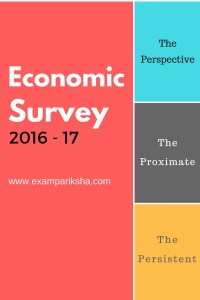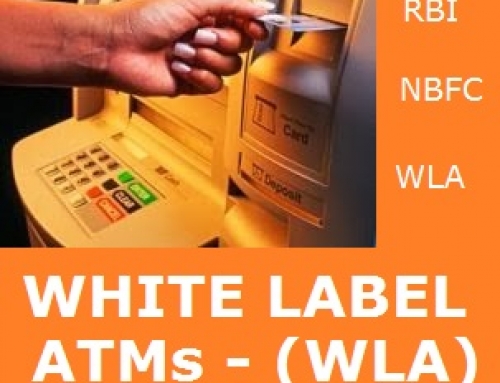The Economic Survey is tabled in both the houses of Parliament a day before the presentation of the annual Budget. It serves as the flagship annual review of the Indian economy over past 12 months.
Since it gives details about developments in Indian Economy, studying the Economic Survey is an important part of civil services preparation. The survey is the ministry’s view on the annual economic development of the country. Hence, a serious aspirant will never skip it. You may read it cover-to-cover or go through summaries at chapter end, or refer to compilation notes, whichever way suits your preparation style; but never skip it.
The survey basically summarizes two main things :
- Broad performance and challenges of government’s programmes and policy initiatives, suggests measures (not binding on government).
- The prospects of economy in short to medium term along with sector specific issues.
|
Who prepares Economic Survey in India? It is prepared by the Economic Division, Department of Economic Affairs, Ministry of Finance, Government of India. Chief Economic Advisor (CEA)- Arvind Subramanium and his team in Economic Division prepared the Economic Survey of 2017. |
|
What is different and unique this year? Two things: Firstly the significant one -The budget presentation date has been preponed. Second and comparatively insignificant – The Economic Survey has just one volume (so far. Ministry may release the next volume later in the year) |
|
Why early presentation of the Budget? To finish the entire budgetory exercise by March 31. By doing this, the expenditure as well as tax proposals will come into effect right from the beginning of the new fiscal year, thereby ensuring better implementation. |
|
How early presentation of Budget will be better? Under the earlier practice, the budgetary exercise was completed only by mid-May and with the monsoon arriving in June, most of the schemes and spendings by states did not take off until October, leaving just half-a-year for their implementation. |
The 2016-17 Economic Survey Highlights
Union finance minister Arun Jaitley tabled the Economic Survey 2016-17 in Parliament budget session on 31st January 2017.
The survey said the adverse impact of demonetisation on GDP growth will be transitional. Remonetisation will eliminate cash squeeze by April 2017.
■ Gross domestic product (GDP) growth in 2016-17 to dip to 6.5%, down from 7.6% in last fiscal.
■ The economy is projected to grow in the range of 6.75% to 7.25% in the next fiscal year 2017-18.
■ The Economic Survey states that the world GDP is expected to grow because of a fiscal stimulus in the United States but points out that there are considerable risks.
■ Farm sector to grow at 4.1% in the current fiscal, which is up from 1.2% in 2015-16. The higher growth in agriculture sector is credited to better monsoon rains in the current year than the previous two years.
■ Fiscal gains from Goods and Services Tax (GST) will take time to realise.The Constitutional Amendment on GST will create a common Indian market, improve tax compliance and governance and boost investment and growth.
■ Growth rate of industrial sector are estimated to be moderate to 5.2% in 2016-17 from 7.4% in the last fiscal.
■ It said addressing the Twin Balance Sheet problem of over-indebted corporates and bad-loan-encumbered Public Sector Banks will be vital.
■ The Survey highlights that Apparel and Leather & Footwear sectors are eminently suitable for generating jobs that are formal and productive, thereby providing bang-for-buck in terms of jobs created relative to investment and generating exports and growth. These sectors provide immense opportunities for creation of jobs for the weaker sections, especially women, and have potential to usher in broader social transformation in the country.
■ It suggests setting up of a centralised Public Sector Asset Rehabilition Agency(PARA). The Agency will take charge of the largest, most difficult cases, and make politically tough decisions to reduce debt. As per the Survey, gross Non-Performing Assets (NPAs) have climbed to almost 12 per cent of gross advances for public sector banks at end-September 2016.
■ It said middle class to get affordable housing due to fall in Real Estate prices.
■ The Economic Survey 2016-17 has advocated the concept of Universal Basic Income (UBI) as an alternative to the various social welfare schemes in an effort to reduce poverty.
■ It said centre should take the lead in sound fiscal management. Good fiscal performance by States should be incentivized to keep the overall fiscal performance on track. Economic Survey 2016-17 elaborates that as the fiscal challenges mount for the states because of the Pay Commission recommendations, and mounting payments from the UDAY bonds, there is a need to review how fiscal performance can be kept on track.
■ It said labour migration data in India reveals that inter-state labor mobility is significantly higher particularly for females than previous estimates. The new study is based on the 2011 Census and railway passenger traffic flows of the Ministry of Railways and new methodologies including the Cohort-based Migration Metric (CMM).
■ It said Urban Local Bodies (ULBs), can tap Property Tax to generate additional revenue at city level. The Survey shows that property tax potential is large and Satellite imagery can be a useful tool for improving urban governance by facilitating better property tax compliance. The study has shown that Bengaluru and Jaipur are currently collecting no more than 5-20 per cent of their respective potentials for property tax.
What chapters to cover in the Economic Survey 2017 for IAS preparation?
The Economic Survey for year 2017 is divided into following parts:
- Eight Interseting Fatcs about India

Section I : The Perspective
- Economic Outlook and Policy Challenges – It gives a broad overview of recent economic developments and a near-term outlook. This is the most important chapter for understanding the state of Indian economy. Read this complete. And forget to revise it every month.
- The Economic Vision for Precocious, Cleavaged India – It gives a long-term perspective to analyze where India stands and argues that overcoming some of the meta-challenges will require broader societal shifts. in ideas.
Section II : The Proximate
- Demonetization: To Deify or Demonize? – It deals with demonitization and its repurcussions on the Indian economy.
- The Festering Twin Balance Sheet Problem – This chapter deals with the festering twin balance sheet
challenge and ways to address it. - Fiscal Framework: The World is Changing, Should India Change Too? – It asseses the fiscal challenges for India and policies followed in developed world.
- Fiscal Rules: Lessons from the States – It deals with fiscal policy of the center and states.
- Clothes and Shoes: Can India Reclaim Low Skill Manufacturing? – It deals with labour-intensive employment
creation. - Review of Economic Developments – It reviews sectoral developments in the first half of the year.
- Universal Basic Income: A Conversation With and Within the Mahatma – This chapter explores the ides of UBI with respect to the Indian scenario.
Section III : The Perspective
- Income, Health and Fertility: Convergence Puzzles
- One Economic India: For Goods and in the Eyes of the Constitution
- India on the Move and Churning: New Evidence
- The “Other Indias’: Two Analytical Narratives (Redistributive and Natural Resources) on States’ Development
- From Competitive Federalism to Competitive Sub-Federalism: Cities as Dynamos





